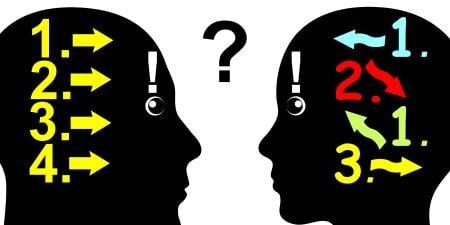Abstract
This essay will briefly sketch historical changes in the framing of dementia since the late nineteenth century. In broad terms, this period has seen a shift from viewing dementia as a pathological variant of normal aging to viewing it as a distinct disease. Although this broad reframing of dementia was clearly positive in raising awareness and funding for research, it had some negative aspects that should be considered. Caregiving came to seem less important than research aimed at a cure, and the stigma surrounding dementia has, if anything, increased.
Introduction
In his influential article on the social and cultural framing of disease, historian Charles E. Rosenberg argued, “In some ways disease does not exist until we have agreed that it does, by perceiving, naming and responding to it” [1]. Rosenberg was not denying the biological reality of disease but making the case for a historically rigorous perspective that also understands disease as a verbal construct reflecting medicine’s intellectual and institutional history. Viewed in this light, disease is also a mediating structure in doctor-patient interactions, an aspect of individual identity and ascribed social role, a focal point for expressing cultural values, and an occasion and arena for public policy debate. Rosenberg’s metaphor of a cultural “frame” concisely captures the complex processes involved in how a society defines and deals with a disease. Dementia seems an example of this process par excellence. Everything we know about the natural history of age-associated progressive dementia suggests that it has always been part of human experience, but only since the early twentieth century has dementia been regarded as the product of a disease, and only in the last half of the twentieth century has it been regarded as a major public health issue. This broad reframing of dementia was the result not merely of changing medical concepts but of a broader social transformation of aging.
Framing Dementia as a Brain Disease in Early Twentieth-Century German Psychiatry
In the mid-nineteenth century, psychiatry in Europe and America was seen by many as falling behind other branches of clinical medicine that were rapidly progressing in their ability to define the pathogenesis and etiology of discrete disease entities through pathological and eventually bacteriological research [2]. The discovery by German psychiatrists in 1857 that general paresis, one of the most common forms of what was then called insanity, was connected to syphilitic infection raised new hopes that clinical-pathological correlations would lead to etiological theories and ultimately therapeutic interventions for other forms of mental illness [3].
In the first decade of the twentieth century, the German psychiatrists Emil Kraepelin and Alois Alzheimer were interested in making dementia the second major mental disorder for which a clear pathological basis had been established. In 1906, Alzheimer presented a brief paper on the case of a 51-year-old woman who developed progressive dementia that, despite her young age, seemed to be identical to senile dementia. In 1910, on the basis of this case and a handful more published by Alzheimer and others, Alzheimer’s mentor Emil Kraepelin created the category of Alzheimer’s disease in the eighth edition of his influential textbook to distinguish early-onset “presenile” cases occurring before age 65 from the much more common senile dementia occurring at later ages [4].
Subsequent researchers have advanced several different theories about why Kraepelin created this new entity [5]. But what seems clear is that he did not think it made sense to call a condition strongly associated with aging a disease. The pathological processes of deterioration in old age that produced senile dementia were understood to be on the extreme end of “normal,” while dementia occurring at earlier ages, as in the case Alzheimer presented, even though ostensibly associated with the same brain pathology and clinical symptoms, seemed to suggest some kind of disease process [5].
Kraepelin’s evident reluctance to view age-associated deterioration as a disease helps explain what, from our vantage point today, seems most surprising about the early history of Alzheimer’s disease—that it seemed so insignificant to Alzheimer, Kraepelin, and their contemporaries. Alzheimer’s initial report drew no enthusiastic reaction from the audience of psychiatrists who heard him give it, nor did its publication in 1907 draw any significant attention [6], and Kraepelin himself devoted only a few pages of a massive textbook to it. After Alzheimer’s death in 1915, almost none of the many tributes to him written by his colleagues even mentioned the disease that was named for him [6]. Alzheimer’s disease did not seem significant to Alzheimer, Kraepelin, and their contemporaries because they were interested in mental disorders for which a clear pathological basis could be established. Although the pathological basis of dementia was clear, because it could not be disentangled from aging it seemed hard to regard it as a disease. Carving out “Alzheimer’s” as a separate disease was helpful, but the condition was too rare to be considered a major breakthrough for psychiatry [5].
Framing Dementia as a Problem in the Adjustment to Aging in the Mid-Twentieth Century
Around the same time as Alzheimer and Kraepelin were researching the neuropathological basis of dementia in Germany, psychiatrists in the United States were beginning to experience dementia as a growing problem that threatened to overwhelm the state mental hospital system that was the institutional heart of their profession. An unintended result of the creation by state governments of state-funded hospitals through the mid-nineteenth century was that local welfare officials were given a strong financial incentive to classify old people with dementia who could no longer live independently in the community as insane so that they would be institutionalized in the state mental hospitals at the expense of state governments. As a result, beginning in the late nineteenth century and increasingly through the 1950s, aged patients with dementia were becoming one of the most prominent segments of the patient population. Since dementia was regarded as hopelessly incurable, the state hospitals were in danger of being regarded as custodial institutions rather than centers of active treatment [7].
From mid-1930s through the 1950s, a number of American psychiatrists led by David Rothschild responded to the challenge of dementia in the state hospitals by framing dementia as a psychosocial problem rather than a brain disease [8, 9]. Rothschild and his followers argued that the observation of inconsistent correlations between clinical manifestations of dementia and pathological findings could best be accounted for by people’s differing ability to compensate for brain damage. Seen this way, age-associated dementia was more than the simple and inevitable outcome of a brain that was deteriorating due to aging and/or disease. It was the interaction between the brain and the psychosocial context in which the aging person was situated. For psychodynamically oriented American psychiatrists, this approach was a more satisfying theory of dementia because it explained the variability often found between the degree of brain pathology found at autopsy and the degree of dementia that had been observed clinically, and it provided a logical basis for trying therapeutic interventions and preventive strategies [8].
The theory also proved influential beyond psychiatry. To practitioners in the emerging field of social gerontology, the high prevalence of senile mental deterioration as construed by psychiatrists like Rothschild served as an indictment of society’s failure to meet the needs of the elderly. The “adjustment” of the individual to the social demands of aging was the key concept for social gerontologists in the 1940s and 1950s [8]. Failure to adjust resulted in senile mental deterioration, but if policies and programscould be created to keep the increasing numbers of elderly people active and engaged, their mental abilities and independent functioning could be maintained much longer. The community’s responsibility for this went beyond altruism, for if the needs of the burgeoning aging population were not met, the result would be a catastrophic increase in senility. As Jerome Kaplan, an advocate for social programs for the elderly, argued in 1953, “with the number of people who are over 65 increasing significantly each year, our society is today finding itself faced with the problem of keeping a large share of its population from joining the living dead—those whose minds are allowed to die before their bodies do” [10].
The framing of dementia as a psychosocial problem was thus a fundamental part of the case aging advocates made for a series of policy changes, such as the creation of the Medicare program [11] and the Older Americans Act of 1965 [12], that helped to transform the experience of aging in America. By the 1970s, many of their goals had been achieved: the economic status of the elderly as a group had been improved, important protections had been won against age discrimination, and negative stereotypes about old age were challenged [13]. In this context, the problem of age-associated dementia became more visible and tragicbecause people began to enter old age with a higher set of expectations for remaining active and involved in social life, setting the stage for another dramatic reframing of dementia.
Framing Dementia as a Dread Disease and Major Public Health Crisis in an Aging World
Dementia emerged as a major public issue in the late 1970s through the efforts of a coalition of caregivers and family members struggling to deal with dementia in the context of new expectations for aging, researchers in the neurosciences influenced by the biological revolution in psychiatry, and government officials trying to win funding for research on aging and age-associated conditions. Central to the coalition’s strategy was advancing the claim that age-associated dementia should be viewed as the result of disease rather than aging, as part of a more general claim advanced within gerontology and geriatrics that aging itself should not normally be accompanied by disease and disability [5]. Neurologist Robert Katzman was perhaps the most prominent exponent of this claim, arguing in an influential 1976 article that the distinction between what was then called Alzheimer’s presenile dementia and senile dementia ought to be dropped and that the unified entity should be called Alzheimer’s disease [14].
Combining the categories meant that the problem was large, and with the aging of the baby-boomer generation, it would soon become enormous. Calling the unified category “Alzheimer’s” framed it as a specific disease entity with a well-established pathological basis in the brain. Campaigns organized around this reframing of dementia were highly successful. By 1980, Alzheimer’s had become a household word and the object of a massive federally funded research initiative [5]. But there were unintended consequences that undermined two other stated goals of Alzheimer’s advocates—increasing support for caregivers and lessening the stigma of dementia [5]. To make a compelling case for funding biomedical research aimed at treatment and prevention, advocates always implicitly and sometimes explicitly trafficked in what critics called “apocalyptic demography” [15], arguing that finding an effective treatment or cure was the only way to avoid an avalanche of dementia cases associated with the aging of the baby boomer generation that would overwhelm the health care system [16]. Public policy in the United States largely followed this logic, with the result that while money for biomedical research dramatically increased, relatively little was invested in providing specific supports for caregivers or developing creative approaches to improving the quality of care for people with dementia [5]. Similarly, in order to make the case that Alzheimer’s causes great suffering, advocates represented the losses associated with dementia as so total and irrevocable as to call into question whether people suffering from it could still properly be regarded as people at all, thus greatly deepening the stigmatization of those diagnosed with it and intensifying the anxiety people felt about aging itself [16].
Conclusion
A number of recent developments suggest that a reframing of dementia is underway. A string of highly publicized clinical trial failures of drugs for treating Alzheimer’s disease has led critics to question whether research is pursuing a dead end [17], although the pharmaceutical strategy of targeting the beta-amyloid protein that has dominated research for three decades certainly still has strong defenders [18]. Basic research continues to fragment the concept of Alzheimer’s disease into subtypes [19], and the nonAlzheimer’s dementias have begun to receive more attention [20]. Meanwhile, perhaps the biggest story of the past decade in the dementia field is the surprising finding that the rate of dementia in the United States declined from 11.6 percent to 8.8 percent between 2000 and 2012 [21]. Although the factors behind this phenomenon still must be established, some researchers argue that falling dementia rates are attributable to aging Americans’ better control of risk factors and higher average educational level [22, 23]. Finally, in reaction to these kinds of developments, scholars across academic disciplines increasingly have called for a more integrative approach to dementia care that would bring biomedicine into dialogue with public health, social science, bioethics, and the medical humanities [24]; and the policy response in the United States and other countries has broadened to emphasize not just biomedical research but social support and inclusion through the concept of dementia-friendly physical and social environments [25].
It is too soon to precisely define the reframing of dementia that is underway, but it seems clear that the individual and collective experience of people living with dementia and caring for people living with dementia is challenging the conceptual framework that brought attention to dementia as a major public issue.
References
-
Rosenberg CE. Framing disease: illness, society, and history. In: Rosenberg CE, Golden J, eds. Framing Disease: Studies in Cultural History. New Brunswick, NJ: Rutgers University Press; 1992:xiii.
-
Rosenberg CE. Explaining Epidemics and Other Studies in the History of Medicine. New York, NY: Cambridge University Press; 1992.
-
Engstrom EJ. Clinical Psychiatry in Imperial Germany: A History of Psychiatric Practice. Ithaca, NY: Cornell University Press; 2003.
-
Maurer K, Volk S, Gerbaldo H. Auguste D.: the history of Alois Alzheimer’s first case.
Google Scholar
In: Whitehouse PJ, Maurer K, Ballenger JF, eds. Concepts of Alzheimer Disease: Biological, Clinical, and Cultural Perspectives. Baltimore, MD: Johns Hopkins University Press; 2000:5-29. -
Ballenger JF. Self, Senility, and Alzheimer’s Disease in Modern America: A History. Baltimore, MD: Johns Hopkins University Press; 2006.
-
Maurer K, Maurer U. Alzheimer: The Life of a Physician and the Career of a Disease. New York, NY: Columbia University Press; 2003.
- Grob GN. Mental Illness and American Society, 1875-1940. Princeton, NJ: Princeton University Press; 1983;
-
Ballenger JF. Beyond the characteristic plaques and tangles: mid-twentieth century US psychiatry and the fight against senility.
Google Scholar
In: Whitehouse PJ, Maurer K, Ballenger JF, eds. Concepts of Alzheimer Disease: Biological, Clinical, and Cultural Perspectives. Baltimore, MD: Johns Hopkins University Press; 2000:83-103. -
Ballenger JF. Progress in the history of Alzheimer’s disease: the importance of context. In Perry G, Avila J, Kinoshita J, Smith MA, eds. Alzheimer’s Disease: A Century of Scientific and Clinical Research. Amsterdam, The Netherlands: IOS Press; 2006:5-13.
-
Kaplan J. A Social Program for Older People. Minneapolis, MN: University of Minnesota Press; 1953:3.
-
Social Security Amendments of 1965, Pub L No. 89-97, 79 Stat 286.
-
Older Americans Act of 1965, Pub L No. 89-73, 79 Stat 218.
-
Calhoun RB. In Search of the New Old: Redefining Old Age in America, 1945-1970. New York, NY: Elsevier; 1978.
- Katzman R. Editorial: the prevalence and malignancy of Alzheimer disease. A major killer. Arch Neurol. 1976;33(4):217-218.
- Robertson A. The politics of Alzheimer’s disease: a case study in apocalyptic demography. Int J Health Serv. 1990;20(3):429-442.
-
2018;
Ballenger JF. The biomedical deconstruction of senility and the persistent stigmatization of old age in the United States.
Google Scholar
In: Leibing A, Cohen L, eds. Thinking about Dementia: Culture, Loss, and the Anthropology of Senility. New Brunswick, NJ: Rutgers University Press; 2006:106-122. -
Crow D. Merck’s drug failure deals further blow to Alzheimer’s theory. Financial Times. February 15, 2017. https://www.ft.com/content/acae196e-f391-11e6-8758-6876151821a6. Accessed May 30, 2017.
- Mullard A. Alzheimer amyloid hypothesis lives on. Nat Rev Drug Discov. 2016;16(1):3-5.
- Bredesen DE. Metabolic profiling distinguishes three subtypes of Alzheimer’s disease. Aging (Albany NY). 2015;7(8):595-600.
-
Dementia—not all about Alzheimer’s. Lancet. 2015;386(10004):1600.
- Langa KM, Larson EB, Crimmins EM, et al. A comparison of the prevalence of dementia in the United States in 2000 and 2012. JAMA Intern Med. 2017;177(1):51-58.
-
Kolata G. US dementia rates are dropping even as population ages. New York Times. November 21, 2016. https://www.nytimes.com/2016/11/21/health/dementia-rates-united-states.html. Accessed May 30, 2017.
- Ganguli M. The times they are a-changin’: cohort effects in aging, cognition, and dementia. Int Psychogeriatr. 2017;29(3):353-355.
- Portacolone E, Berridge C, Johnson J, Schicktanz S. Time to reinvent the science of dementia: the need for care and social integration. Aging Ment Health. 2014;18(3):269-275.
- Lin SY, Lewis FM. Dementia friendly, dementia capable, and dementia positive: concepts to prepare for the future. Gerontologist. 2015;55(2):237-244.



